Spicy diced chicken, known in Chinese cuisine as 爆炒鸡丁 (bào chǎo jī dīng), is a dish that tantalizes taste buds with its fiery heat, tender chicken, and vibrant mix of vegetables and aromatics. This classic Sichuan-style stir-fry has gained global popularity for its bold flavors and satisfying texture. Whether you’re a seasoned home cook or a novice in the kitchen, mastering this dish requires attention to detail, quality ingredients, and a understanding of the techniques that elevate it from ordinary to extraordinary. In this comprehensive guide, we’ll explore the steps, tips, and secrets to cooking spicy diced chicken that will rival your favorite restaurant version.
The Essence of 爆炒鸡丁: A Brief Cultural Overview
Originating from China’s Sichuan province, 爆炒鸡丁 is a quintessential example of xiāng là (香辣) cuisine—a style defined by its aromatic spiciness. Sichuan cooking is renowned for its liberal use of chili peppers, Sichuan peppercorns, garlic, and ginger, which create a numbing-spicy sensation known as málà (麻辣). This dish embodies that spirit, balancing intense heat with savory umami and a hint of sweetness.
Traditionally, 爆炒鸡丁 is prepared using a wok and high heat, a technique called bào chǎo (爆炒), which translates to “explosive stir-frying.” The goal is to cook the ingredients rapidly over intense flames, sealing in flavors and textures while achieving a smoky char known as wok hei. While achieving wok hei at home can be challenging without a commercial stove, modern kitchens can still produce incredible results with the right tools and methods.
Key Ingredients: Building Flavor Layer by Layer
The beauty of 爆炒鸡丁 lies in its harmonious blend of ingredients. Each component plays a role in creating depth and complexity. Here’s a breakdown of the essentials:
-
Protein: Chicken thigh or breast meat is most common. Thigh meat is juicier and more forgiving, while breast meat offers a leaner option. Cut the chicken into uniform, bite-sized cubes (about 1.5 cm) to ensure even cooking.
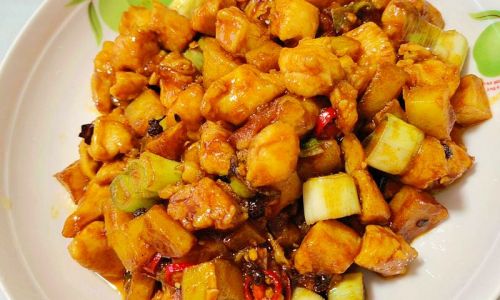
-
Aromatics: Fresh garlic, ginger, and scallions form the flavor base. Mince them finely to release their oils during stir-frying.
-
Vegetables: Bell peppers (red, green, or yellow), onions, and dried chili peppers add color, crunch, and heat. For a twist, try adding diced carrots or celery.
-
Spices: Sichuan peppercorns and dried chili flakes are non-negotiable for authentic flavor. Toasting the peppercorns before grinding releases their citrusy, numbing essence.
-
Sauces: A blend of soy sauce, oyster sauce, and a touch of vinegar balances the dish’s saltiness and acidity. For sweetness, a small amount of sugar or honey complements the spice.
-
Cornstarch: A critical ingredient for marinating the chicken, cornstarch creates a velvety texture and helps the meat retain moisture during cooking.
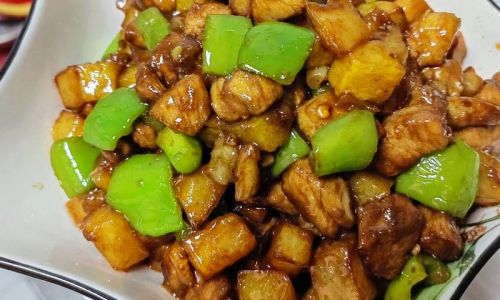
-
Oil: Use a neutral oil with a high smoke point, such as peanut or vegetable oil, for stir-frying. A touch of sesame oil added at the end enhances aroma.
Preparation: The Foundation of Flavor
Marinating the Chicken
The secret to tender, juicy chicken lies in marination. Combine the diced chicken with soy sauce, rice wine (or sherry), cornstarch, and a drizzle of oil. The cornstarch forms a protective coating, while the oil prevents sticking during stir-frying. Marinate for at least 15 minutes (or up to an hour) to allow the flavors to penetrate the meat.
Prepping the Vegetables and Aromatics
- Bell Peppers: Remove seeds and membranes, then dice into squares slightly smaller than the chicken.
- Onions: Peel and cut into wedges.
- Dried Chilies: Snip into 2-cm segments, discarding seeds if you prefer less heat.
- Garlic and Ginger: Mince or grate for maximum flavor release.
- Scallions: Chop into 3-cm sections, separating the white and green parts.
Mixing the Sauce
Combine soy sauce, oyster sauce, vinegar, sugar, and a splash of water or chicken broth in a small bowl. This sauce will coat the ingredients during the final stages of cooking, ensuring every bite is flavorful.
The Cooking Process: Step-by-Step Mastery
Heating the Wok
Preheat your wok or largest skillet over high heat until it’s smoking hot. Add a generous glug of oil (about 2–3 tablespoons) and swirl to coat the surface. This step, called rè chuān (热穿), ensures the ingredients sear rather than steam.
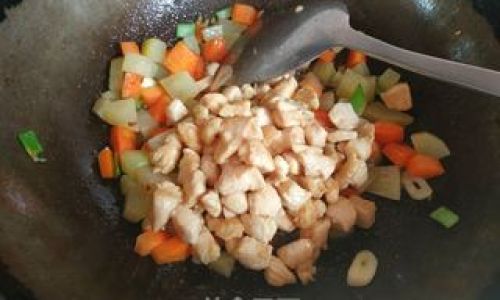
Stir-Frying the Aromatics
Add the dried chilies, Sichuan peppercorns, minced garlic, and ginger to the hot oil. Stir-fry for 10–15 seconds until fragrant but not browned. The goal is to infuse the oil with their essence without burning them.
Cooking the Chicken
Add the marinated chicken to the wok, spreading it in a single layer. Let it sear undisturbed for 30 seconds to develop a golden crust, then stir-fry vigorously for 2–3 minutes until nearly cooked through. Overcrowding the pan will lower the temperature and steam the meat, so work in batches if necessary.
Adding Vegetables
Toss in the bell peppers and onions. Stir-fry for another 2 minutes until the vegetables are crisp-tender. The high heat will soften them slightly while retaining their vibrant color and crunch.
Incorporating the Sauce
Pour the prepared sauce into the wok and toss everything together. The sauce will thicken almost instantly due to the cornstarch from the marinade. Cook for an additional 30 seconds to coat the ingredients evenly.
Final Touches
Remove the wok from heat and drizzle with sesame oil. Sprinkle the green parts of the scallions and a handful of toasted peanuts or cashews for added texture. Serve immediately with steamed rice or noodles.

Tips for Perfecting Your 爆炒鸡丁
- Wok Selection: A carbon-steel wok is ideal for high-heat cooking, but a heavy-bottomed stainless steel skillet can work if seasoned properly.
- Heat Control: Maintain high heat throughout cooking. Lowering the flame will result in soggy vegetables and rubbery chicken.
- Don’t Overcook the Chicken: Overcooking leads to dryness. Remove the chicken from the wok as soon as it’s opaque and slightly firm.
- Adjust Spice Levels: For less heat, reduce the number of dried chilies or remove the seeds. For extra fire, add a pinch of chili powder or fresh bird’s eye chilies.
- Garnish Creatively: Toasted sesame seeds, crushed Sichuan peppercorns, or a sprinkle of cilantro can elevate the dish’s presentation and flavor.
Common Mistakes to Avoid
- Crowding the Pan: Cook in batches if your wok is small. Overcrowding lowers the temperature and causes steaming instead of searing.
- Skipping the Marinade: The cornstarch and soy sauce in the marinade are crucial for tenderizing the chicken and creating a glossy sauce.
- Underseasoning: Taste and adjust the sauce before adding it to the wok. Sichuan dishes should be boldly flavored.
- Overcooking Vegetables: Vegetables should retain some crispness. Remove them from the heat while they’re still vibrant.
Variations and Customizations
- Protein Swaps: Substitute chicken with diced beef, pork, or even tofu for a vegetarian twist. Adjust cooking times accordingly.
- Vegetable Medley: Experiment with snap peas, zucchini, or mushrooms. Just ensure they’re cut to the same size for even cooking.
- Spice Levels: Tailor the heat to your preference. A mild version can use bell peppers and a touch of paprika, while a fiery version might include fresh Thai chilies.
- Regional Twists: For a Hunan-style variation, add fermented black beans or doubanjiang (chili bean paste) for a deeper, saltier flavor.
Pairing Suggestions
- Rice: Fluffy jasmine rice or sticky glutinous rice complements the dish’s spiciness.
- Noodles: Serve over egg noodles or chow mein for a heartier meal.
- Sides: Steamed bok choy, cucumber salad, or pickled vegetables provide a refreshing contrast.
- Beverages: A crisp lager, jasmine tea, or plum juice can soothe the palate between bites.
Conclusion: The Joy of Cooking 爆炒鸡丁 at Home
Cooking 爆炒鸡丁 is as much an art as it is a science. It rewards patience, precision, and a willingness to experiment. By mastering the marinade, controlling the heat, and balancing flavors, you can create a dish that’s both comforting and exhilarating. Whether you’re hosting a dinner party or craving a quick weeknight meal, this spicy diced chicken will never disappoint. So grab your wok, ignite your stove, and embark on a culinary adventure that bridges cultures and delights the senses. With practice, you’ll not only replicate the magic of Sichuan cuisine but also infuse each bite with your own personal touch. Happy cooking!
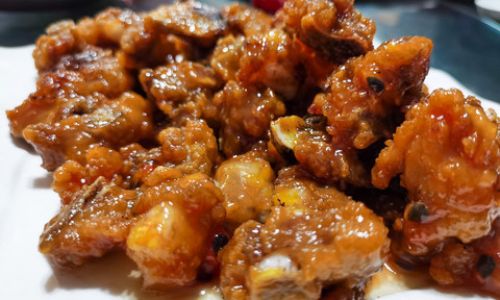
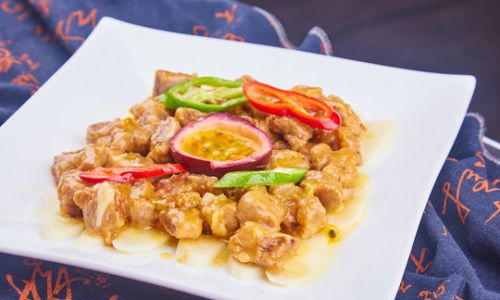
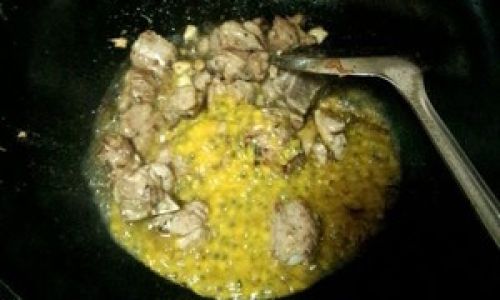



0 comments